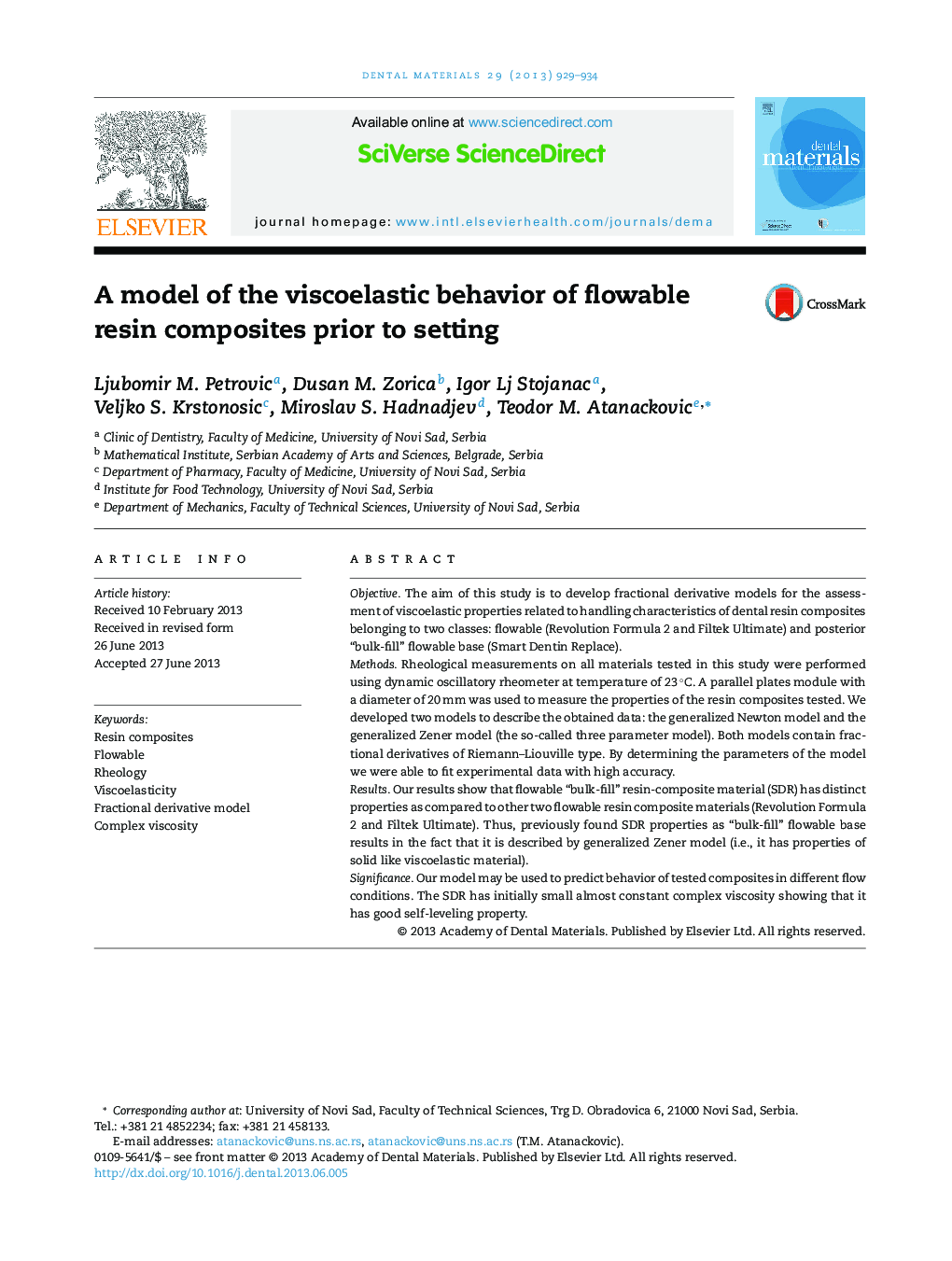| Article ID | Journal | Published Year | Pages | File Type |
|---|---|---|---|---|
| 1421189 | Dental Materials | 2013 | 6 Pages |
ObjectiveThe aim of this study is to develop fractional derivative models for the assessment of viscoelastic properties related to handling characteristics of dental resin composites belonging to two classes: flowable (Revolution Formula 2 and Filtek Ultimate) and posterior “bulk-fill” flowable base (Smart Dentin Replace).MethodsRheological measurements on all materials tested in this study were performed using dynamic oscillatory rheometer at temperature of 23 °C. A parallel plates module with a diameter of 20 mm was used to measure the properties of the resin composites tested. We developed two models to describe the obtained data: the generalized Newton model and the generalized Zener model (the so-called three parameter model). Both models contain fractional derivatives of Riemann–Liouville type. By determining the parameters of the model we were able to fit experimental data with high accuracy.ResultsOur results show that flowable “bulk-fill” resin-composite material (SDR) has distinct properties as compared to other two flowable resin composite materials (Revolution Formula 2 and Filtek Ultimate). Thus, previously found SDR properties as “bulk-fill” flowable base results in the fact that it is described by generalized Zener model (i.e., it has properties of solid like viscoelastic material).SignificanceOur model may be used to predict behavior of tested composites in different flow conditions. The SDR has initially small almost constant complex viscosity showing that it has good self-leveling property.
